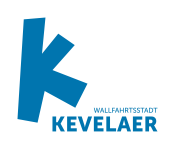Magaretha Heijmanns stumbling block
On April 25 of that year [1941], the mentally ill Margarethe Heijmanns died in the institution for the mentally ill in ... [...]"
These are the last words and the only reference to the life of Magaretha Heijmanns in Wetten. This brief entry in the chronicle by the Wetten priest Brill was the reason for intensive research into the whereabouts and fate of Magaretha Heijmanns.
Magaretha was born on July 28, 1895 in Wetten house no. 99, now Kapellener Straße. Like many children at the time, she attended elementary school and then worked as a maid on the neighboring farm as a teenager. Her youth and young adulthood were influenced by the course of the First World War, the founding of the Weimar Republic, the stressful hyperinflation of 1923, and certainly also by the personal challenges that life in the 1920s presented.
When Magaretha was admitted to the Bedburg-Hau sanatorium and nursing home on March 12, 1930, the doctor noted in the admission anamnesis "Onset of illness at the age of 14, allegedly caused by overexertion and heat. Changes in her nature occurred, stubbornness, unruliness, forgetfulness [...]."
The entries in her patient file give us an idea of the impressions and supposedly medical treatments she had to endure: notes such as "Had to go to the permanent bath because of her restless behavior" paint a picture of the disturbing conditions on site. The patients were restrained in bathtubs filled with lukewarm water. A cloth or a wooden board with a cut-out head was placed over the bath, so that the patients were kept in the bath for hours and sometimes days.
Magaretha's patient file was kept for ten long years and paints a picture of a woman who had to experience disturbing things in the Bedburg-Hau institution.
Transfers of patients due to economic interests created an atmosphere of fear and anxiety. The lack of lasting bonds with fellow inmates, the uncertainty of possibly being transferred themselves and the possible assignment to physically demanding (punitive) work characterized life in the institution.
Under these adverse circumstances, it is therefore not surprising that there are no file entries describing Magaretha as "autistic, dull" or "negativistic".
The resolution of the euthanasia decree at the beginning of September 1939, which legitimized the subsequent planned Action T4 and approved the centrally controlled murder of so-called "sick and disabled people", among others, once again changed the conditions in the institutions: Entries about the "inmates'" ability to work and determination of the "severity of their illness or physical limitations" solidified the image of patients as economic and movable commodities or as a burden for the institutions and the state.
When the Bedburg-Hau sanatorium and nursing home was converted into a Wehrmacht hospital in November 1939, 356 patients were evacuated to the hospital in Hanover as an initial wartime measure. The remaining patients were classified by the doctors as "mildly ill" or "mildly restless" and conscripted for labor. As Aktion T4 progressed, however, the measures were tightened and the remaining patients were also deported.
On March 8, 1940, Magaretha Heijmanns and 170 other patients were transferred from Bedburg-Hau to the Görden State Hospital. According to current research, it can be assumed that some of the transferred patients were probably already killed in Görden by the perfidious system of gas murder. Those who survived the Görden state hospital were deported to the Bernburg extermination center in April 1941 and murdered on the same day. Magaretha Heijmanns' last freely chosen place of residence was at what is now Langstraat 8 in Wetten. A stumbling block there commemorates her fate.

